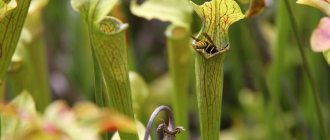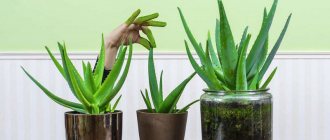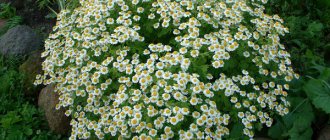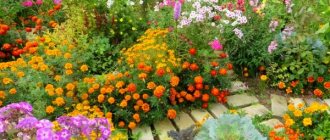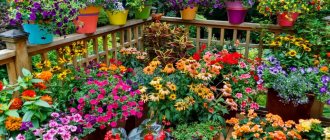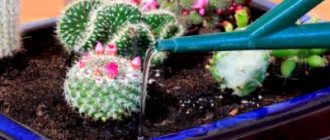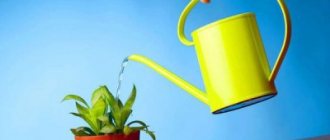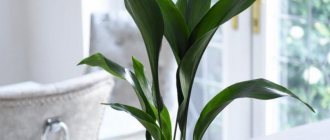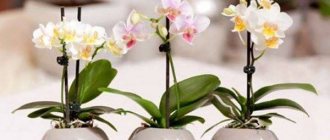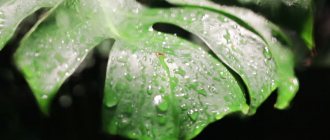Tulip
Remember that tulips need 12 to 16 weeks of “hibernation”, otherwise you will only get leaves and flowers will not be able to form. The bulbs can spend this time in the refrigerator. However, keep them away from apples. The gas released from the fruit is harmful to tulips.
After “wintering” the bulbs, take a glass vase, place washed stones or glass decorative beads on the bottom and pour water level into the “ground”. Place the bulbs on top of the glass beads so that the water just touches the base of the bulbs, pointy side up. Maintain water levels and provide plants with warmth and light. Forcing tulips can be timed to coincide with any holiday; to do this, you just need to count the correct number of weeks for stratification and plant growth.
Succulents
These crops are gaining popularity because they do not require constant care, including watering, or a special pot for planting.
There is one way to forget about watering and replanting succulents for a long time. To do this, the plant is placed in a container, which is filled with clay pebbles. After this, the filled pot is placed in another pot with water.
Pebbles serve as a fastening for succulents, and water supplies them with the necessary substances.
Basil
A basil bush can be grown from a small shoot or cutting. To do this, place the shoot in a jar of water and place it in a well-lit place. In just 6-7 days the plant will take root. After which the cutting can be planted in the ground, but it can also be left in water; it will develop beautifully and produce new shoots.
Even though basil grows in water, its leaves also benefit from moisture, so mist it 2-3 times a week and change the water in the container daily. In just 2-3 weeks you will be able to add fresh leaves of the aromatic herb to salads, and in total such a plant will be able to supply greens to the table for 3-4 months. Other herbs can also be grown using landless methods.
Chinese cabbage
Do not rush to throw away the remains of Chinese cabbage. You can grow a new fork from it. To do this, just place the remaining tip in a glass of water. If you take a vegetable specifically for growing, then it is better to give preference to cabbage with a thick stalk.
Before placing it in water, cut off the bottom, just a little. Place the glass with the plant in a cool place. The culture will take root in a few days. And after 10-14 days you will be able to cut the first leaves from it.
Bamboo
Select a container that is taller than the bamboo cuttings. Rinse it and the stones you plan to use thoroughly. Place the latter on the bottom, they should hold the bamboo.
Add non-chlorinated water to the jar so that 4-5 centimeters of the cuttings are in the water. Filtered or bottled water is suitable for growing bamboo. Regular tap water should be left standing for at least 24 hours. Place the vase in a bright place, but not in direct sunlight. Bamboo is quite suitable for artificial lighting.
Change the water at least once every two weeks, preferably weekly. Rinse the leaves and stems of your bamboo plant under warm running water once or twice a month to prevent or remove spider mites. Once a month it can be fed with organic fertilizer.
Possibilities of hydroponics for growing indoor plants
The hydroponics method is a rejection of the traditional soil mixture, the use of a substrate and a special fertilizer solution. The name is literally translated from Greek as “water” and “work”. A chemist-biologist explains how to use hydroponics in growing house plants.
Advantages of the method for indoor floriculture:
- No soil is required and there is virtually no need for annual replanting.
- Simplified care - adding water and fertilizer concentrate 1-2 times a month.
- Optimal water supply to roots thanks to water level indicator.
- Possibility of not watering due to absence from home for 4 weeks or more.
- Optimal nutrition and ventilation of the root system.
- There are no pests that breed in the soil.
- Plants are less susceptible to disease.
- No mold or unpleasant odor.
- Suitable for people with allergies or asthma.
- Increased humidity and better microclimate in the room.
Unfortunately, the system is not without some shortcomings. The first is already visible when purchasing plants and equipment for hydroponics - they are usually more expensive than for traditional growing in soil. The substrate accumulates less nutrients, so regular addition of fertilizers is very important.
Types of hydroponics
The idea of organizing the cultivation of plants in an artificial solution, from seeds to adulthood with flowering, was born in 1856 in the mind of the German botanist Wilhelm Knoop. Since then, the method has been actively developed and currently includes several approaches based on the characteristics of plant root nutrition.
Types or types of hydroponics are special water delivery systems:
- deep water culture DWC (actually hydroponics);
- periodic flooding (high and low tides);
- NFT nutrient film;
- drip irrigation;
- aeroponics;
- wick system.
The first and last types from the list are the most accessible. They are used at home and are commonly called water and substrate cultivation.
Simple hydroponics methods can be mastered even by beginners in floriculture. The task is simplified by purchasing a houseplant that has already been kept in a nursery or store without soil in a nutrient solution. This will be a clear example that will allow you to quickly master a new flower care system.
Indoor reeds
Isolepis drooping, or indoor reed, is a plant of the sedge family, whose homeland is swamps and other heavily moist areas. Therefore, it will not be difficult to grow it in a pot with water. Isolepis shoots first grow upward, then wander around, so it is better to take a tall, not too wide container.
When the indoor reed grows, a flowerpot with it will become a wonderful home decoration. The plant reproduces by seeds and division of the rhizome; to grow in water, you need to take a bush that is not too small; soft, settled water should cover the roots.
Do not place isolepis in bright sunlight; partial shade and humidity are the best conditions for its growth. Indoor reeds also benefit from monthly fertilizers that do not contain calcium.
Water garden and flower in the water in the photo
You can set up a water garden, which will be located next to the pond. For near-water compositions, ordinary rather than aquatic indoor plants are used - they are grown in pots or containers around a water device. It is possible to include a water feature in an indoor garden, but a simpler approach is to create a potting group around it. First, you need to purchase a water device, preferably with moving water - a small fountain, a dome-shaped bubble fountain, a stone with a waterfall, etc. Place it on a hard surface and install a light source that illuminates the moving water.
Look at the photo of a flower in water - this is a wonderful illustration of the original idea:
Now place potted plants around the water feature. The tallest plants should be at the back of the composition. Medium-sized plants should be placed on the sides to surround the water area. A weeping plant that does not interfere with a fountain or waterfall would be an effective addition. Low-growing and hanging plants can be used in the front to hide the edges of the water container.
Eichornia
Water hyacinth or eichornia is a beautiful and unpretentious plant. Water is all you need to grow. Eichornia is easy to grow in a garden pond and even on the surface of an aquarium. Flower growers did not ignore it either.
This plant loves wide, deep containers of water located in warm places with good lighting. Afraid of drafts. A special foam float ring will keep the plant afloat. In summer, under favorable conditions, it pleases with delicate lilac, orchid-like flowers.
To stimulate flowering, the water temperature is raised to 30 degrees. It is advisable to fertilize with complex fertilizers for aquarium plants or liquid fertilizers for indoor flowers.
The benefits of moisture-loving flowers for humans
Excessive dry air is harmful to our respiratory organs. Everyone feels this for themselves. The normal level of air humidity in the room will be between 40 and 70%. In winter, dryness becomes critical. Trying to correct the situation, we buy expensive air humidifiers that do not decorate our interior at all. But there is a wonderful way to achieve comfortable humidity in a natural and beautiful way - by growing semi-aquatic or aquatic plants.
Houseplants growing in water have a romantic, fantastic appearance and lush greenery. Such an area with lush greenery, and even in combination with well-chosen photo wallpapers, will create a real tropical kingdom in the apartment. Any indoor flowers cleanse the atmosphere of the apartment and enrich it with oxygen. True, cacti and other succulents do this to a lesser extent. But tropical swamp plants have powerful photosynthetic activity. All physiological processes occur energetically in them, so they can supply us with oxygen and moisture to the maximum.
Tarragon
Dragon's wormwood (tarragon or tarragon) can be propagated by cuttings or by dividing the bush. Place the cutting in water, cutting off the lower part. When dividing the bush, wash the roots if there are any remaining soil on them.
Add a little liquid mineral fertilizer to the water. It will take no more than a week for the root system to form. Change the water once a week, but avoid chlorinated water; it is better to use settled water. If possible, use spring or well water; it contains dissolved minerals that are beneficial to plants. You can use any glass container, but you must remember that the sun is not good for the roots, so wrap the jar in paper to shade the roots.
Growing plants in water does not require complex manipulations and equipment; on the contrary, it simplifies obtaining results. Don't be afraid to experiment, it's interesting and suitable for family activities with children, or if there is no area for planting.
How do algae differ from aquatic flowering plants?
- Angiosperms form a flower, but algae do not bloom
- The body of algae is called slang and is not divided into tissues and organs
- Flowering plants can (at least theoretically) form fruits
- Flowering plants never grow at great depths, like algae; their bodies most often lie on the water, rather than under water. This makes it possible to breathe oxygen from the air rather than oxygen dissolved in water.
- They belong to different systematic groups and have their own history of development (evolution)
Why do floating leaves of aquatic plants have stomata only on the upper side of the leaf, while leaves submerged in water have no stomata at all?
Because plants get rid of excess moisture through stomata, it is logical that floating plants have stomata on the upper side of the leaf (otherwise the plants would drown)! And submerged plants don’t need stomata, what’s the point if when you try to remove moisture you get 10 times more of it!
Stomata serve for gas exchange with the surrounding air and evaporation of moisture. In aquatic plants, the lower surface of floating leaves is immersed in water, in which gas exchange and evaporation cannot occur, so stomata are located only on the upper side of the leaf. Leaves that are completely immersed in water have no contact with the air at all, so they have no stomata.
Rosemary
To root rosemary, you need to take just a few sprigs 10–12 cm long and place them in water at room temperature. Within 1–1.5 weeks the plant will have roots.
It is recommended to place this culture in well-lit areas, as a large amount of light promotes the production of essential oil. The crop needs to be periodically sprayed and the branches cut off when their length exceeds 15 cm.
Plants in jars. Which plants are suitable for growing behind glass?
Whatever plant you place under glass, it will begin to actively grow and develop there, because increased temperature and humidity are favorable for most green residents. But many plants like these conditions so much that they begin to go wild and over time fill the entire space, and soon they completely crawl out of the container.
To prevent this from happening, plants for the florarium must be selected with special care. For beginners, succulents would be an ideal option: Crassula, saxifrage, agaves. They grow very slowly and do not require difficult conditions. With their help, florariums are created with a desert or rocky landscape.
For tropical forests in a jar, small bushes of tradescantia, begonia, chlorophytum, phytonia, and pilea are suitable. These plants are prone to active growth, so tradescantia and begonias will have to be regularly pinched off the growing point, and plants such as chlorophytum will have to be completely replaced with new ones.
Orchids are considered the most difficult to care for. For their maintenance, spacious florariums are made with lighting and a ventilation system. For small containers, only species with short peduncles such as lady's slipper are suitable.
Hyacinth
Tall vases with decorative stones are suitable for growing hyacinths. But you should prepare for the fact that hyacinths take a long time to develop before flowering - before that you will need to wait 4-5 months.
From the very beginning, it is better to choose a vase with a narrow neck. This is necessary so that the hyacinth does not touch the water with its rhizome. Place the vase in the refrigerator. Wait until the sprout grows to 5 cm and move the crop to a cool windowsill. There it will continue to develop.
